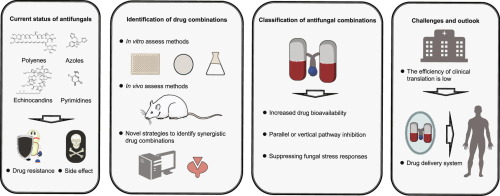
**New Category of Antifungals Uncovered by Researchers at McMaster University**
Scientists at McMaster University in Canada have made a significant advancement in antifungal research by uncovering a new category of antifungals that can fight against several important fungal pathogens. This finding may lead to innovative treatments for fungal infections, which pose a major challenge in global health, especially with the increasing prevalence of drug resistance.
The McMaster team employed an innovative platform for antifungal discovery using a technique referred to as prefractionation. This method allows researchers to extract specific molecules from intricate chemical mixtures, resulting in the identification of previously unnoticed bioactive compounds. Through this approach, the researchers successfully isolated a group of compounds known as lipopeptaibiotics derived from the plant-associated fungus *Coniochaeta hoffmannii*.
In contrast to previously identified antifungal agents, the lipopeptaibiotics found by the team possess a distinctive structural feature. These compounds culminate in a polar amino acid residue rather than a C-terminal amino alcohol, placing them within a newly recognized subclass termed coniotins. This novel configuration enhances their broad-spectrum antifungal efficacy.
The primary coniotin, coniotin A, exhibited remarkable antifungal capabilities when evaluated against established first-line antifungals such as caspofungin, amphotericin B, and fluconazole. It proved to be highly effective against a variety of fungal pathogens, including multiple *Candida* species, *Cryptococcus neoformans*, *Nakaseomyces glabratus*, and the widely known baker’s yeast, *Saccharomyces cerevisiae*.
Notably, coniotin A displayed significant potency against multidrug-resistant strains like *Candida auris* and *Aspergillus fumigatus*, both identified as critical threats by the World Health Organization. Its antifungal effectiveness outperformed that of caspofungin and fluconazole, presenting a promising new alternative in the battle against resistant fungal pathogens.
A key feature of coniotin A is its uncommon mechanism of action, which involves specifically targeting the fungal cell wall. By attaching to beta-glucan, an essential polysaccharide within the cell wall, coniotin A causes cellular disruption, increasing the pathogen’s vulnerability to other antifungals, like caspofungin. The researchers highlighted that this distinctive action implies a low likelihood of resistance development, a vital benefit in antifungal treatments.
Considering their physicochemical characteristics, coniotins have the potential to be effective candidates for both topical and intravenous use, expanding their applicability in clinical environments. The potential that coniotins hold in combating multidrug-resistant fungal infections represents a significant breakthrough in antifungal research, which could contribute to addressing one of the urgent challenges in infectious disease management today.